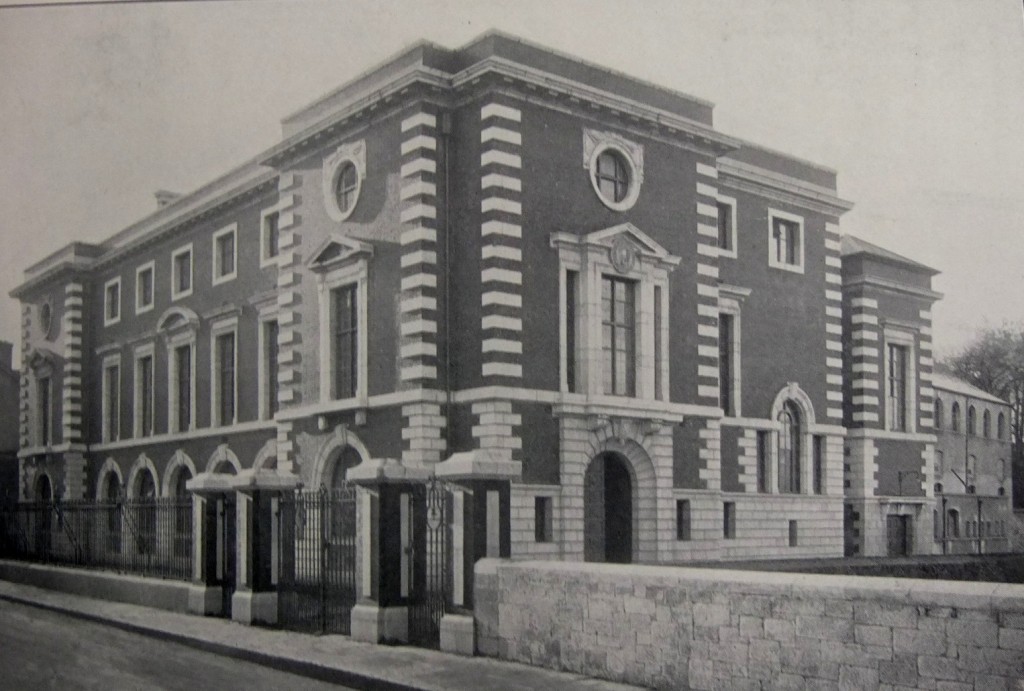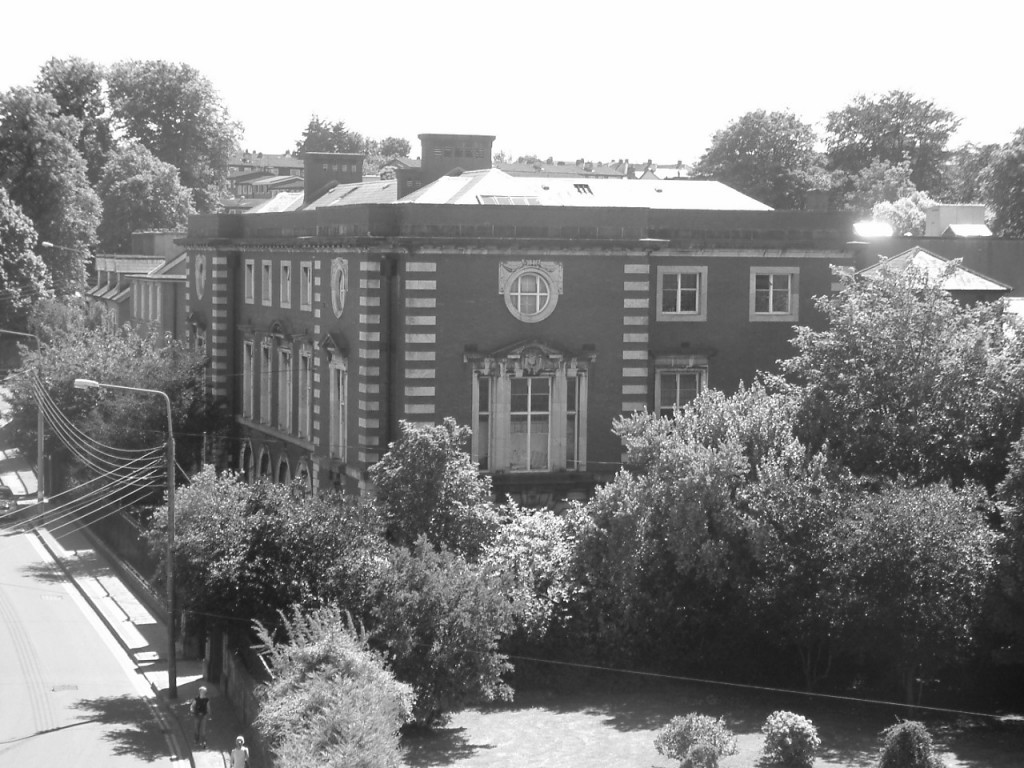
Kieran’s Our City, Our Town Article,
Cork Independent, 12 January 2012
Technical Memories (Part 1)
A Technical Act
This month coincides with the 100th anniversary of the official opening of the building, which houses CIT Crawford College of Art and Design on Sharman Crawford Street, Cork. A series of events have been planned to mark the occasion. I’d like to share some articles on the history on the 1912 establishment of the building, which when it opened was called the Crawford Municipal Technical Institute, Cork.
The Agriculture and Technical Instruction (Ireland) Act in 1899 recognised the need for an Irish framework for technical education in an attempt to halt industrial and manufacturing decline. The Irish act came ten years after the British one was passed. The Irish work proceeded along four lines. Firstly, technical instruction was re-organised under local authorities. Secondly, a system of instruction was planned in experimental science, drawing, and manual work, and domestic economy in day secondary schools. Thirdly, there was a focus on “operations bearing directly on industries”. Fourthly, higher technical instruction was re-organised in the Royal College of Science.
In extensive and richly descriptive journals, published by the Department of Agriculture and Technical Instruction from 1901 to 1921, the steps are outlined that each city and town, in particular, pursued in order to comply with the aims of the act. The 1901 journal (now in the Boole Library, UCC) reveals that in Cork the necessary steps were taken to transfer the control of the classes from the General Committee appointed by the Corporation of Cork under the Public Libraries (Ireland) Acts of 1855 and 1877 to a Technical Instruction Committee of the Corporation. That consisted of 21 members, eight of whom were accepted, and the transfer was carried out in 1901.
There already existed in Cork the work of the central Technical Schools of Science and Art. These schools, better known in their day as the Crawford Municipal Technical Schools, were presented to the City of Cork by William Horatio Crawford in 1884. The buildings comprised sculpture and picture galleries (Crawford Art Gallery), library, lecture theatre, class rooms for art, and some rooms for Science and technology. However, the 1901 technical instruction committee deemed the buildings insufficient for their proposed central technical institute.
The School of Art had engaged in some excellent work, but the science classes, on the whole, were deemed to be “starved” in the 1901 report. On the industrial side of the school there were classes for lace-making and crochet. These classes were largely attended, and most of the designs were supplied by students of the design class in the School of Art. A key feature of the School of Art was the system of scholarships connected to it. In 1892 ten free studentships were offered to pupils of national schools in the city, admitting them to evening classes. A preliminary test examination in freehand enabled the committee to select the best candidates. In respect of scholarships, the Cork Industrial Exhibition of 1883 had an important influence on the school. It was decided that a surplus remaining from the fund, raised for the exhibition, should be devoted to the endowment of two scholarships of £50 each, to enable successful candidates to receive a year’s training at the Royal College of Art in South Kensington, London. At first these scholarships were limited to young men (industrial students or artisans), but in 1889-90, one of the scholarships was offered to female students. The scholarships were of great benefit to many of the successful candidates; several won scholarships in the College of Art, South Kensington, and obtained appointments under the London School Board.
Out of the first year’s Departmental grant in 1900, the Technical Instruction Committee allotted to different secondary schools in the city a sum of £1,600 for equipment and apparatus. In Cork, a head science master was also appointed, who was to render the same service as in Belfast in the organisation of the new technical instruction scheme. Mr O’Keeffe, a technological teacher, who had fifteen years’ experience at Finsbury Technological College, London, was appointed by the committee, with the approval of the Department.
In 1901 the committee appointed a deputation consisting of three members of the committee and the Head Science Master to visit the various centres of technical instruction in England and Scotland. There they gained an insight into the working of many excellent schemes in existence, particularly those, which afforded some comparison with the work practiced in Cork. The report of the deputation again strongly advised the retention of all available funds for the purpose of building a central Technical College, which should be for the benefit of the County as well as the City of Cork. A large part of the funds at the disposal of the committee at that time were allocated to various secondary institutions to equip science classes. The committee decided to wait until better financial conditions prevailed before discussing the erection of a central Technical College.
Between the years 1901 and 1908, classes in science and commercial subjects were held in three centres in Cork. The Crawford School of Art was the first. The second centre was in the Model Schools in Anglesea Street, and the third was at 13 Union Quay.
To be continued…
Caption:
623a. Crawford Municipal Technical Institute, Cork 1912 (source: Opening Souvenir Booklet)
